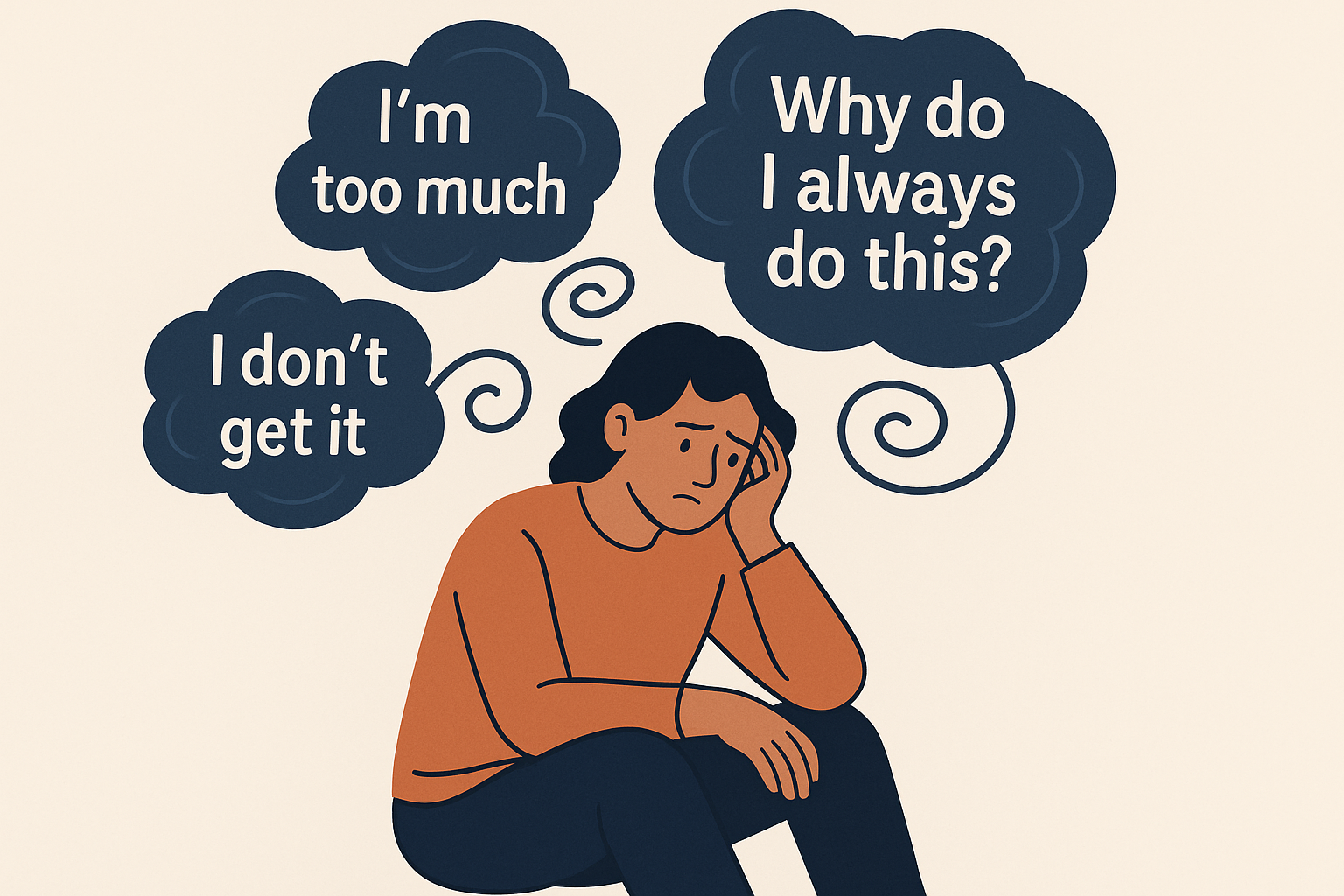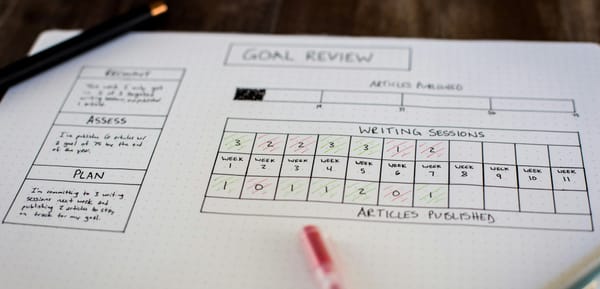How AI Helps Decode the ‘Why Am I Like This?’ Moments

We’ve all had that moment. You say something awkward, spiral over a text, or overthink a tiny interaction and suddenly the question hits: “Why am I like this?”
It’s not just a meme-worthy phrase. It’s a genuine cry for clarity. For many people, it’s the first flicker of self-awareness, a signal that something under the surface doesn’t feel right. But trying to make sense of your own behavior can be frustrating, especially when you don’t have the words for what you’re experiencing.
This is where AI is quietly changing the game. Today, AI mental health tools are helping people uncover emotional patterns, identify triggers, and understand themselves in ways that used to require weeks or years of therapy. They’re not a replacement for human support, but they are making self-reflection more accessible, less intimidating, and surprisingly effective.
Whether you're dealing with anxious attachment, burnout, overthinking, or self-sabotage, AI therapy tools like Aitherapy are trained to spot the patterns behind your confusion and guide you toward insight.
In this article, we’ll explore what those “why am I like this” moments really mean, how AI tools help decode them, and why this tech might be the most powerful self-awareness tool you didn’t know you needed.
What We Really Mean When We Say “Why Am I Like This?”
“Why am I like this?” isn’t really a question about personality. It’s a moment of emotional friction, something felt but not fully understood. A triggered reaction. A repeated pattern. A moment when your own behavior surprises you, disappoints you, or just doesn’t make sense.
What we usually mean is:
- Why did I get so anxious about that message?
- Why do I ruin things when they start going well?
- Why do I care so much about what people think?
These moments often arise from deeper emotional patterns we haven’t yet named:
- Overthinking and anxiety
- Fear of rejection
- People-pleasing and emotional burnout
- Anxious attachment or past trauma
- Self-sabotage behavior
But instead of pausing to reflect, most of us fall into a shame loop. We criticize ourselves, compare ourselves to others, or bury the feeling under distraction. That makes self-understanding even harder.
The good news? These moments are actually invitations to dig deeper. When you notice yourself thinking “Why am I like this?”, it’s often the mind’s way of flagging a pattern. You’re not broken, you’re just bumping up against something that hasn’t been fully processed. And recognizing that is the first step to breaking free.

Why It’s So Hard to Understand Ourselves Without Support
Trying to understand yourself from inside your own head is like trying to read the label from inside the jar.
Even when you want to figure out why you act or feel a certain way, it’s tough. You're biased. You have blind spots. And sometimes, the emotions you're trying to make sense of are the same ones clouding your judgment.
You might journal, talk to friends, or listen to a podcast. Those are great tools — but they often lack the structure or psychological insight needed to really decode what's going on. For example, you might say "I’m so dramatic," when what’s actually happening is an emotional flashback from an earlier experience of abandonment. You might think you're just lazy when you're actually dealing with burnout.
The truth is, self-awareness is a skill, not a default setting. And most of us never got formal tools to learn it.
Therapy offers one path to clarity, but it’s not always accessible whether due to cost, fear, or stigma. That leaves many people stuck in cycles of confusion, mislabeling their behavior, or worse, blaming themselves.
This is where AI-powered tools can fill a critical gap. They help you name what you’re feeling, recognize emotional patterns, and break the loop, even if you’ve never been to therapy before.
What AI Mental Health Tools Are Actually Doing
When people hear “AI therapy,” they often imagine a robotic voice giving generic advice. But in reality, the best AI mental health tools are much more than that. They’re built on real therapeutic frameworks, especially Cognitive Behavioral Therapy (CBT), and designed to help you notice, name, and reframe your thoughts.
Let’s say you message an AI tool like Aitherapy and say:
“I always ruin things when they’re going well.”
Instead of a vague affirmation or canned reply, it might respond:
“It sounds like you're experiencing self-sabotage. That can be linked to fear of success or unworthiness. Want to unpack that?”
What just happened?
- It recognized a pattern: self-sabotage
- It named a deeper emotional driver: fear of success
- It invited reflection, not shame
This is the kind of support most people don’t get from casual venting or scrolling TikTok. And while it doesn’t replace a licensed therapist, it can provide structure and insight right when you need it.
Many tools like Aitherapy are available 24/7, cost a fraction of traditional therapy, and are designed to feel emotionally safe. Unlike ChatGPT, which responds to whatever prompt you give it, tools like these are trained specifically to support mental health conversations, using therapist-informed responses, emotional validation, and thought reframing techniques.
They help you zoom out from the moment and start connecting the dots between what you feel and what might be driving it.
Real-Life Examples of “Why Am I Like This?” Moments and How AI Helps Decode Them
To understand how AI tools like Aitherapy actually work in practice, let’s look at a few real-life-style examples. These are the kinds of emotional moments that spark the “Why am I like this?” spiral and how an AI therapist can step in to reframe them with clarity and compassion.
Example 1: Overthinking a Text Message
User: “It’s been 2 hours and they haven’t texted back. I feel sick. I know I’m being dramatic.”
AI: “You’re not dramatic — it sounds like this might be related to anxious attachment. Would you like to explore how that shows up for you?”
What’s happening: Instead of shaming the user, the AI names a pattern (anxious attachment) and invites exploration. This turns self-criticism into self-inquiry.
Example 2: Sabotaging Something Good
User: “Every time something good happens, I find a way to mess it up.”
AI: “That sounds like self-sabotage — a common response when success feels unsafe. Would you like to look at where that fear might come from?”
What’s happening: The AI highlights that self-sabotage often isn’t random — it’s protective. This helps the user move from confusion to curiosity.
Example 3: Feeling Tired All the Time
User: “I’m exhausted, even though nothing is technically wrong.”
AI: “Could you be experiencing emotional burnout? Sometimes the weight of unspoken stress can wear us down more than we realize.”
What’s happening: The AI connects physical exhaustion to emotional overload, something many people miss without external perspective.
Why This Matters
These small shifts in conversation can spark major mindset changes. Instead of spiraling or suppressing emotions, users start seeing their reactions as part of larger emotional patterns. AI doesn’t just give answers, it helps ask better questions.
The best part? You don’t have to explain everything from scratch, like you would with a new therapist. The AI meets you where you are overwhelmed, confused, or stuck and offers language for what you’re feeling.
Ready to unpack your own “Why am I like this?” moments?
The Psychology Behind It. Why AI Is Effective
It might sound strange that a machine can help you process your emotions but there’s real psychology behind why it works.
Most AI therapy tools are trained using Cognitive Behavioral Therapy (CBT), one of the most evidence-based approaches in modern psychology. CBT focuses on identifying unhelpful thought patterns, reframing them, and building new responses. This makes it highly compatible with AI’s core strength: pattern recognition.
AI models like the one behind Aitherapy are exposed to thousands of anonymized conversations. Over time, they learn to detect cognitive distortions (like catastrophizing, black-and-white thinking, or personalization) and respond in ways that mirror what a trained therapist might say.
They’re not guessing, they’re working from structured frameworks.
And because they don’t get emotionally overwhelmed or distracted, they can consistently provide calm, supportive guidance. That reliability builds trust.
In fact, research has started to show that CBT-based AI tools can meaningfully reduce symptoms of anxiety, depression, and emotional distress especially when used consistently.
Of course, they’re not perfect. AI won’t give you the human warmth of a therapist’s voice or the deep context of your personal history. But for many people, the tradeoff is worth it: 24/7 access, low cost, and zero judgment.
AI doesn’t heal you. But it helps you understand yourself. And that’s where healing begins.
AI Therapy Doesn’t Replace Therapy But Might Help You Start It
AI is not a replacement for a human therapist. But for a lot of people, AI tools are the first step toward mental health support especially for those who feel therapy is too expensive, intimidating, or just out of reach.
One of the biggest benefits of AI therapy is that it builds emotional vocabulary. If you’ve never heard terms like “emotional burnout,” “avoidant attachment,” or “inner critic,” an AI tool can gently introduce them to you in context. You learn by doing, by asking questions, getting reflections, and connecting dots in real time.
Over time, this process develops self-awareness, which is one of the strongest predictors of long-term emotional health. When people eventually do seek traditional therapy, they often arrive more prepared, with language for their experiences and curiosity about their patterns.
AI therapy can also act as a bridge — offering support between human sessions, during long waits for appointments, or late at night when no one else is available.
It’s not about choosing between AI and therapy. It’s about meeting yourself where you are, and using every tool available to support that journey.
How to Get the Most Out of AI Therapy Tools
AI therapy isn’t magic, it’s a tool. And like any tool, how you use it makes all the difference. Here are a few ways to make AI mental health tools like Aitherapy more effective for you:
Be honest
You don’t need to filter yourself. Say what you’re really thinking or feeling, even if it feels messy or irrational. The more real you are, the more helpful the responses will be.
Ask follow-up questions
If something resonates, dig deeper. Follow threads like “Where does this come from?” or “What can I do next?” Treat the AI like a mirror, not a magic answer machine.
Come back often
Insight builds over time. The more you use the tool, the more patterns you’ll begin to see in your thoughts and behaviors.
Combine it with journaling
Write down reflections or breakthroughs after a session. This helps solidify what you’re learning and track your growth.
Know when it’s time to talk to a person
If you're feeling overwhelmed, stuck, or unsafe, human support is essential. AI is a guide, not a crisis line.
Turning Confusion Into Compassion with AI Support
The next time you catch yourself thinking, “Why am I like this?” pause. That question, as uncomfortable as it is, is actually a powerful sign: you’re paying attention. You’re trying to understand yourself. And now, you don’t have to do it alone.
AI therapy tools are making emotional insight more accessible than ever. They help you name your patterns, question your thoughts, and reflect with compassion instead of shame. And they do it on your time whether it's 3 a.m. after an anxious spiral or a lunch break when everything just feels off.
No, AI isn’t human. But it doesn’t need to be. It’s a bridge, a starting point, a way to meet yourself with curiosity instead of criticism.
Because beneath every “Why am I like this?” moment is a more important one:
“What’s really going on and how can I take care of myself now?”
With the right tools, that moment of confusion can become a moment of clarity. Even healing.





